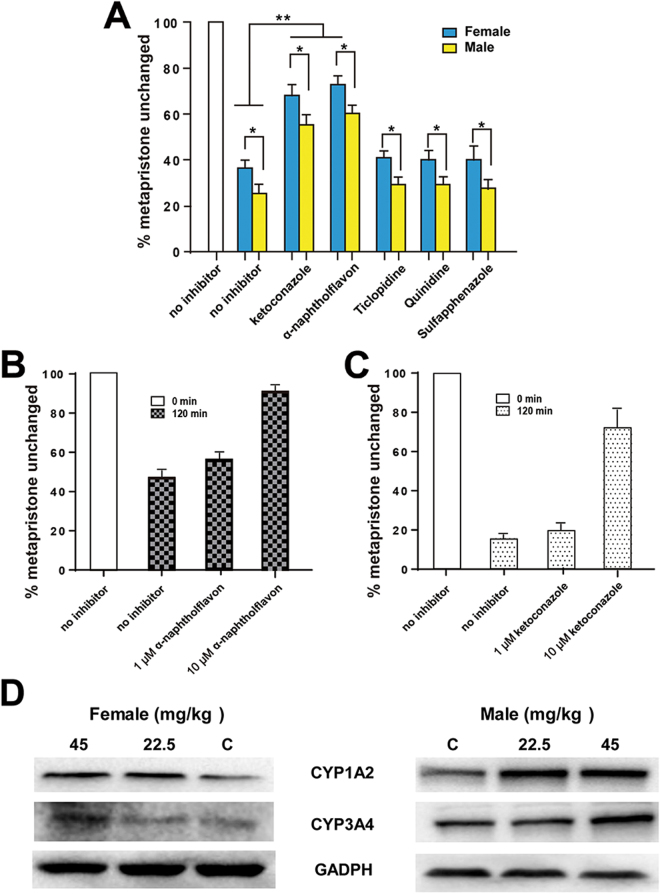Figure 5.
Changes of metapristone metabolism rate induced by male and female liver microsomes in the presence and absence of CYP inhibitors. (A) No significant differences in metabolism rate of metapristone (9 µM) between controls and CYP450 inhibitor sulfaphenazole (CYP2C9), quinidine (CYP2D6), or ticlopidine (CYP2C19); whereas CYP450 inhibitor ketoconazole (CYP1A2) and naphthoflavone (CYP3A4) significantly prevented metapristone from degradation in comparison with the controls during the 120 min incubation. The data also show statistically significant differences in metapristone metabolism between female and male liver microsomes in the presence of the five inhibitors. (B) α-naphthoflavone produced concentration-dependent prevention against metapristone metabolism induced by human CYP3A4; (C) ketoconazole produced concentration-dependent prevention against metapristone metabolism induced by human CYP1A2. (D) up-regulated activities of rat liver CYP1A2 and CYP3A4 after 7-day administration of metapristone. Data represent the mean ± s.d. (n = 3); *P < 0.05; **P < 0.01 of statistically significant difference (Student t test).

